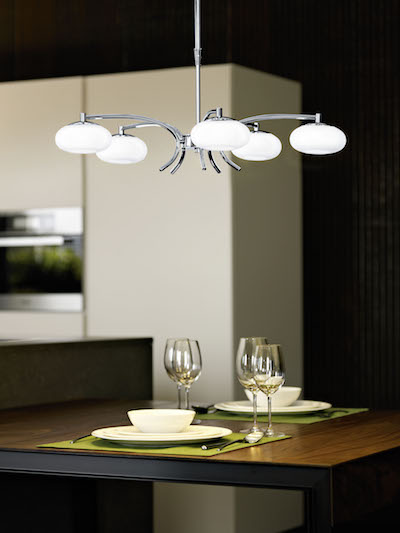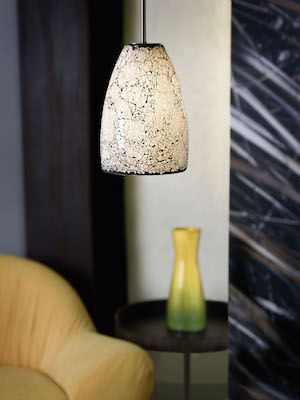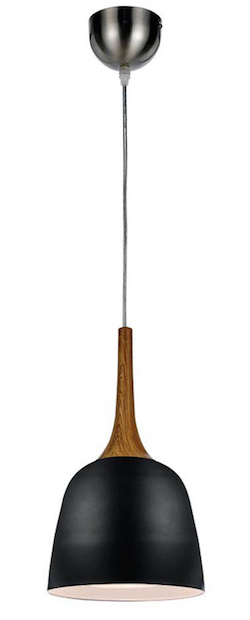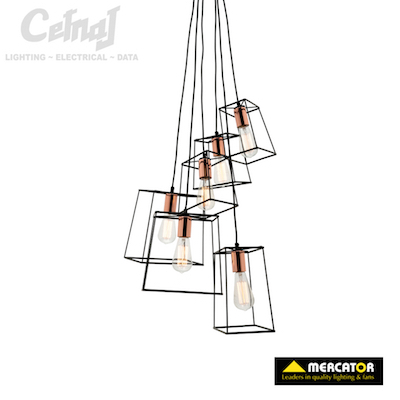Guide to Pendant Lighting
Pendant lighting can really enhance the personality and decor of a house when used effectively. There are many places throughout your home that can suit having a pendant light, including your dining room, kitchen, bedroom, living room, and more if you really want. Here are some tips to making sure your pendant lighting works well with your home.
Firstly, you should consider if the pendant light is for task lighting or ambient lighting. Examples of pendants for task lighting is over the dining table, over kitchen islands, and as bedside lights. Pendants for ambient lighting are ones that provide the general lighting for the room, but don’t light the area used for a specific task. Both types can be provided by a pendant, however, so you may only need that one light for multiple purposes.
When choosing your pendant light, remember the purpose it will serve. For task lighting, you need to make sure enough light is cast downward - or to the task space - so that you can see well enough in that area. For ambient lighting, you can choose a pendant that casts light in a more general area instead of being so focused.
It’s helpful to know the exact size of your room when you go shopping for your pendant light. The salespeople at the store will usually know what type of pendant will work well in the space you have available, and can direct you to pendants that they think would suit the size of your room.

Depending on the style and amount of space you have in the room where you want a pendant, you could choose just one simple pendant for a smaller space, one more elaborate or bigger pendant for a slightly bigger room, a cluster of smaller pendants for a bigger room, or a chandelier style pendant for a room with grand space to utilise.
The most popular place to hang a pendant light is over the dining table. Ideally, it should be hung 70-82 cm (28-34 inches) above the tabletop, then you can adjust the height to suit your preferences. Hanging multiple pendants over a longer, rectangular table works well to light the whole table effectively and creates a good look at the same time. For a square or round table, a single pendant, or a cluster of small pendants can work well. Another good guideline to follow is making sure the pendant takes up two thirds of the space of the table - so try not to hang the pendants so they are right at the edge of the table.
You can also hang pendants over your kitchen island. With similar principles to the dining table, the ideal height is 55-70 cm (22-28 inches) above the benchtop, again adjusted to suit your preference. The shape of the bench also contributes to how many pendants to hang, and what configuration to put them in. You can put a few down the length of the bench, or have a one or a cluster over a more square-shaped bench. Keeping the pendants to two thirds of the bench applies here to.

Another place you can hang a pendant is in a hallway or a stairway. Placed in these common areas, pendants work well for ambient lighting and decorative effect - just make sure it is hung high enough that it won’t interfere with people walking through the space.
The bedroom is a good place for pendants as well - and not just for those hung in the middle of the room for ambient lighting. You can use them as bedside lights if you don’t want or can’t fit table lamps on your bedside tables. Just hang the pendants close enough and low enough to the bed to suit your needs without being in the way.
When hanging a pendant in the middle of a space - like over your dining table, or in the living room, consider whether or not you are likely to move any furniture that sits under the pendant. Make sure that you have a plan so that the pendant does not become an obstacle if the furniture is moved - you can get a chain fitted with the light so you can loop it up and out of the way when you might need that space clear.




